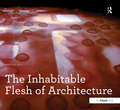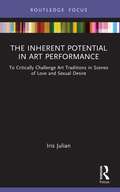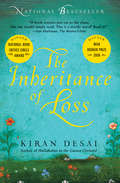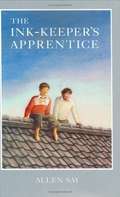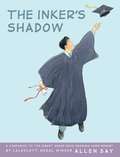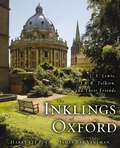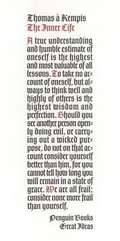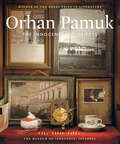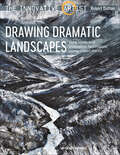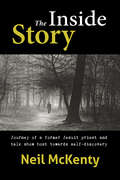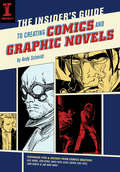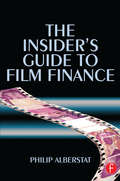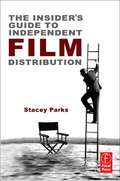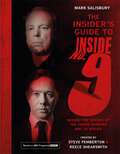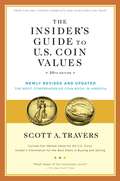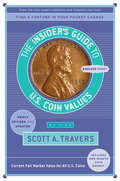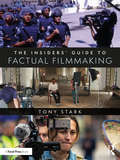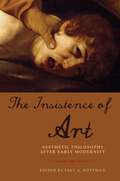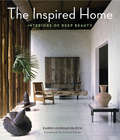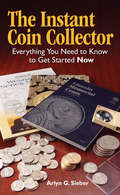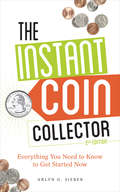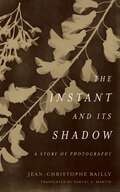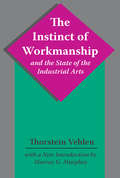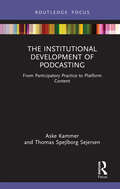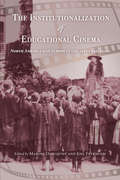- Table View
- List View
The Inhabitable Flesh of Architecture (Design Research in Architecture)
by Marcos CruzToday’s architecture has failed the body with its long heritage of purity of form and aesthetic of cleanliness. A resurgence of interest in flesh, especially in art, has led to a politics of abjection, completely changing traditional aesthetics, and is now giving light to an alternative discussion about the body in architecture. This book is dedicated to a future vision of the body in architecture, questioning the contemporary relationship between our Human Flesh and the changing Architectural Flesh. Through the analysis and design of a variety of buildings and projects, Flesh is proposed as a concept that extends the meaning of skin, one of architecture’s most fundamental metaphors. It seeks to challenge a common misunderstanding of skin as a flat and thin surface. In a time when a pervasive discourse about the impact of digital technologies risks turning the architectural skin ever more disembodied, this book argues for a thick embodied flesh by exploring architectural interfaces that are truly inhabitable. Different concepts of Flesh are investigated, not only concerning the architectural and aesthetic, but also the biological aspects. The latter is materialised in form of Synthetic Neoplasms, which are proposed as new semi-living entities, rather than more commonly derived from scaled-up analogies between biological systems and larger scale architectural constructs. These ’neoplasmatic’ creations are identified as partly designed object and partly living material, in which the line between the natural and the artificial is progressively blurred. Hybrid technologies and interdisciplinary work methodologies are thus required, and lead to a revision of our current architectural practice.
The Inherent Potential in Art Performance: To Critically Challenge Art Traditions in Scenes of Love and Sexual Desire (Routledge Advances in Theatre & Performance Studies)
by Iris JulianThis book spotlights artworks and art performances whose common denominator is the theme of (self-)representation of artists in the 'woman' category in scenes of love and sexuality. Pursuing the research practice of deep drilling, this study presents various methodologies and research directions to create diverse perspectives on the selected artworks. This book combines historical outlines based on art history, visual culture studies, new methodologies in theatre studies and digressions into sociology. Philosophical readings will complement the resulting multiple perspective, in which figures of thought such as transimmanence, the theory of performativity and body-mind dualism are of specific interest. This research brings to the fore networks of sedimented and entangled histories and their role in shaping our ways of seeing. This study will be of great interest to scholars and students in dance, dance performance and art performance.
The Inheritance of Loss (Popular Penguins Series)
by Kiran DesaiIn a crumbling, isolated house at the foot of Mount Kanchenjunga in the Himalayas lives an embittered judge who wants only to retire in peace, when his orphaned granddaughter, Sai, arrives on his doorstep. The judge’s cook watches over her distractedly, for his thoughts are often on his son, Biju, who is hopscotching from one gritty New York restaurant to another. Kiran Desai’s brilliant novel, published to huge acclaim, is a story of joy and despair. Her characters face numerous choices that majestically illuminate the consequences of colonialism as it collides with the modern world.
The Ink-Keeper's Apprentice
by Allen SayA fourteen-year-old boy lives on his own in Tokyo and becomes apprenticed to a famous Japanese cartoonist.
The Inker's Shadow (Scholastic Press Novels)
by Allen SayFor Allen Say, life as teen in Southern California was a cold existence. His father, one of the leading hamburger salesmen in Japan, ran a booming burger business, much like McDonald's
The Inklings of Oxford: C. S. Lewis, J. R. R. Tolkien, and Their Friends
by Harry Lee Poe James Ray VenemanOxford’s fabled streets echo with the names of such key figures in English history as Edmund Halley, John Wycliffe, and John and Charles Wesley. Of more recent times are those of C. S. Lewis, J. R. R. Tolkien, and the other members of the renowned literary circle to which they belonged, the Inklings. What would it be like to walk this medieval city’s narrow lanes in the company of such giants of Christian literature, to visit Magdalen College, where Lewis and Tolkien read aloud their works-in-progress to their friends, or the Eagle and Child pub, the Inklings’ favorite gathering place? The lavish photography of this book will introduce you to the fascinating world of the Inklings, matching their words to the places where these friends discussed—and argued over—theology, philosophy, ancient Norse myth, and Old Icelandic, while writing stories that were to become classics of the faith. The Inklings of Oxford will deepen your knowledge of and appreciation for this unique set of personalities. The book also features a helpful map section for taking walking tours of Oxford University and its environs.
The Inner Life
by Thomas À KempisThroughout history, some books have changed the world. They have transformed the way we see ourselves—and each other. They have inspired debate, dissent, war and revolution. They have enlightened, outraged, provoked and comforted. They have enriched lives—and destroyed them. Now, Penguin brings you the works of the great thinkers, pioneers, radicals and visionaries whose ideas shook civilization, and helped make us who we are. Penguin's Great Ideas series features twelve groundbreaking works by some of history's most prodigious thinkers, and each volume is beautifully packaged with a unique type-drive design that highlights the bookmaker's art. Offering great literature in great packages at great prices, this series is ideal for those readers who want to explore and savor the Great Ideas that have shaped the world. The Inner Life is taken from Thomas à Kempis's The Imitation of Christ, a classic Christian devotional that has taught and inspired generations. .
The Innocence of Objects
by Orhan PamukThe Nobel Prize winner&’s catalog of his Istanbul museum is like &“wandering past the illuminated windows of an arcade. . . . This book spills over with pleasure&”(The New York Times). The culmination of decades of omnivorous collecting, Orhan Pamuk&’s Museum of Innocence in Istanbul uses his novel of lost love, The Museum of Innocence, as a departure point to explore the city of his youth. In The Innocence of Objects, Pamuk&’s catalog of this remarkable museum, he writes about things that matter deeply to him: the psychology of the collector, the proper role of the museum, the photography of old Istanbul (illustrated with Pamuk&’s superb collection of haunting photographs and movie stills), and of course the customs and traditions of his beloved city. The book&’s imagery is equally evocative, ranging from the ephemera of everyday life to the superb photographs of Turkish photographer Ara Güler. Combining compelling visual images and writing, The Innocence of Objects is an original work of art and literature.
The Innovative Artist: New Ideas and Innovative Techniques Using Mixed Media
by Robert DuttonExplore exciting new ways of using graphite, charcoal and mixed media to create dramatic landscape drawings, under the expert tutelage of Robert Dutton.The Innovative Artist series provides a unique insight into the methods and materials used by leading contemporary artists who are pushing the boundaries of their art. Through numerous examples of the author’s work alongside practical demonstrations, each book provides a fascinating exploration of the artist’s creative process that will inspire the reader to move forward on their own artistic journey.This book is aimed at artists who wish to explore new ways of using a variety of drawing media to create striking, dramatic landscapes. Author-artist Robert Dutton uses his expressive, loose style of drawing and painting to capture, with great emotion, the power and drama of the landscape. Robert combines media such as liquid graphite, inks, metallic inks, charcoal and water-soluble painting and drawing pastels, and also experiments with collage work. Predominantly focusing on working in black and white, Drawing Dramatic Landscapes explores basic drawing techniques using a limited range of media, then introduces new techniques and products as the reader progresses. This is a highly-instructive guide to the techniques Robert himself uses, with numerous exercises and larger step-by-step projects throughout the book showing how he works. Alongside these are numerous examples of the author’s finished artworks accompanied by informative captions explaining the methods used to create them, thereby providing both instruction and inspiration.Robert works outdoors from life much of the time, later finishing his artworks in the studio. His work is both achievable and aspirational, making this a highly-attractive book for established artists who wish to gain insight into the work of their contemporaries who are experimenting with new and innovative techniques.
The Inside Story: Journey of a former Jesuit priest and talk show host towards self-discovery
by Neil MckentyA book for anyone on the journey to wholeness. A story of toxic religion, sex and celibacy, drinking and depression, and how they led towards self-discovery and spiritual awakening. “A compelling testimony to our capacity for spiritual transformation in the face of overwhelming odds. McKenty’s story is both inspirational and gut-wrenchingly honest. Highly recommended.” - Tom Harpur, Syndicated Columnist and Bestselling Author
The Insider's Guide To Creating Comics And Graphic Novels
by Andy SchmidtFrom the creative minds behind your favorite modern-day comics ...In this unprecedented, behind-the-scenes guide, former Marvel editor and current IDW senior editor Andy Schmidt and his superstar industry friends give you the inside track on creating engaging, professional-looking comic books.Written for upcoming creative stars and comic book enthusiasts, The Insider's Guide to Comics and Graphic Novels covers the entire creative process from beginning to end, from fine-tuning a script to the nuances of camera angles, costume design and lettering. You'll learn not only how to emulate a camera pan, hit 'em with a splash page and shift into slow motion, but also WHEN and WHY to dip into that bag of graphic tricks for maximum impact.The real-world guide to creating great comics!Profiles and insights from John Romita, Jr., Neal Adams, Gene Ha, David Finch and John ByrneProfessional advice from top talents in the business, including writers Brian Michael Bendis, Geoff Johns and Tom DeFalco; inkers Klaus Janson, Karl Kesel and Mike Perkins; colorist Chris Sotomayor; and letterer Chris EliopoulosExpert instruction on every element of the creative process - writing, drawing, inking, coloring, page layout and scene design - and how they all work together
The Insider's Guide to Film Finance
by Philip AlberstatFinancing an independent feature film production is a highly complex process. This book demystifies the legal and commercial implications of a film from start to finish. It provides a detailed survey of each of the processes and players involved, and analyses of the legal and commercial issues faced by all of the participants in a film financing transaction. Packed with legal advice and straight forward explanations this is an essential reference for filmmakers worldwide.With contributions from leading professionals around the world, and an up-to-date international approach, this is an invaluable tool for producers, and others involved in the film industry.Includes: Case studies, Sample Recoupment Schedules, Alternative Financing Models, Glossary of Film Financing and Banking TermsPhilip Alberstat is a media finance and production lawyer specialising in film, television and broadcasting. He has worked on films such as The 51st State, Goodbye Mr Steadman, Tooth and numerous television programmes and series. He is on the editorial board of Entertainment Law Review and is the author of The Independent Producers Guide to Film and TV Contracts (2000), and Law and the Media (2002).Philip is involved in raising finance for film and television productions and negotiating and structuring film and television deals. He undertakes corporate and commercial work and handles the intellectual property aspects of broadcasting and finance transactions. He has also executive produced numerous film and television productions. He won an Emmy Award in 2004 as an Executive Producer of the Film, "The Incredible Mrs. Ritchie".Philip joined Osborne Clarke as a partner in February 2002. Prior to that he was Head of Legal and Business Affairs with one of the largest independent TV production companies in the UK. He was previously Head of Media at Baker & McKenzie and began his career at Olswang. He was winner of the Lawyer/Hifal Award for Solicitor of the year in 1997 and is listed in Legal Experts in the area of Film Finance/Media.
The Insider's Guide to Independent Film Distribution
by Stacey ParksInnovation in technology means that almost anyone can make an independent film these days. Although this may be good news for aspiring filmmakers, it also means that the oversupply of independent films on the market has caused acquisition prices to dramatically decrease. As a result, producers and investors rarely recover their initial investment in the films they make. But don't be discouraged! Use this book to learn the realities of the market in advance and map out a winning distribution plan. This comprehensive manual for filmmakers and producers dedicated to film distribution and the marketplace could mean the difference between getting your film out to the public and keeping it "in the can." Learn how to sell your movie to a studio, a cable network, a video distributor, or an international buyer. Self-distribution and other alternatives to traditional distribution are also considered. In addition, you'll hear some success stories from producers and hear exactly what buyers are seeking. Stacey Parks has worked with hundreds of hungry filmmakers to get their films a distribution deal and knows how frustrating the whole process can be. Let her show you how you can take control of your filmmaking career and start getting your work seen by audiences with a few little-known distribution secrets. Features include: . Interviews and case studies with producers and distributors. Ten ways to market your film for self-distribution. Sales projections per territory. Distribution resources listings. Negotiation tips for distribution agreements. Sample distribution agreements. What you must know to get your independent film distributed. Written by a distributor who knows the process inside and out. Interviews with buyers and acquisitions executives from every sector of the business on what kinds of films they look for, what they're sick of seeing, and how their acquisitions processes work. Website features sample distribution agreements, budgets, and more! New to this edition:. Completely updated for modern distribution practices (broadcast, DVD, VOD, and other kinds of distribution deals). New coverage on crowd-funding, social media, film marketing, and deal memos . Get the best inside distribution secrets from brand new interviews with an international cast of directors, producers, and distribution experts who share their experiences. Companion website features helpful downloadable forms and templates, sample distribution memos, and a great resource section
The Insider's Guide to Inside No. 9: Behind the Scenes of the Award Winning BBC TV Series
by Mark SalisburyThe ultimate companion to unlock what lurks Inside No. 9Welcome, reader, to the experience of a lifetime: a behind-the-scenes tour of the remarkable Bafta award-winning series. This show-by-show guide reveals the genesis of each episode's idea through to the scripting, casting, design, direction, and production - where you'll have access to the minds and imaginations of creators Reece Shearsmith and Steve Pemberton.Filled with the show's dark humour and behind-the-scenes photographs, production stills, mood boards and concept drawings, you'll find yourself delighted and disturbed in equal measure. Every episode from the first five series will be covered by interviews with key creatives and discussion of the inspiration and creation behind every moment.Are you ready to step through the door marked No. 9?
The Insider's Guide to U.S. Coin Values, 20th Edition
by Scott A. TraversAmerica's #1 consumer advocate for coin hobbyists, collectors, and investors is Scott Travers. Now he has created a guide that provides comprehensive facts on all U.S. coins and a complete listing of the fair market value for your coins today. Plus, he teaches you how to play the lucrative global game of coin collecting by including: * A breakdown of valuable varieties of coins that are hiding in pocket change * Secrets of how to grade, trade and preserve coins like the experts * Current trends in the coin market and how to capitalize with your own collection * The most complete and current price guide on the market today! "If you're buying just one price guide to see what your coins are worth, this is the obvious choice." -COINage magazine
The Insider's Guide to U.S. Coin Values, 21st Edition
by Scott A. TraversAmerica's #1 consumer advocate for coin hobbyists, collectors, and investors is Scott Travers. Now he has created a guide that provides comprehensive facts on all U.S. coins and a complete listing of the fair market value for your coins today. Plus, he teaches you how to play the lucrative global game of coin collecting and investing by including:* How to identify valuable coins that are hiding in pocket change * Secrets of how to grade, trade, and preserve coins like the experts* Current trends in the coin market and how to profit from trading coins* The most complete coin price guide on the market today!
The Insiders' Guide to Factual Filmmaking
by Tony StarkThe Insiders’ Guide to Factual Filmmaking is an accessible and comprehensive ‘how to’ guide about the craft of making documentaries for TV, online or social media. Filmmaker Tony Stark distils a long career at the BBC and as an independent producer to explain the conceptual, visual, editorial and organisational skills needed to make impactful and stylish factual films. Interviews with top industry professionals in the UK and US - commissioners, executive producers, filmmakers, strand editors and media lawyers – add valuable insight and authority to this book. For more experienced filmmakers The Insiders’ Guide tells you how to get the green light for undercover investigations, how to tell film stories online and on social media, and how to budget a factual film. This is a key text for anyone who wants to succeed in the rapidly changing, competitive freelance markets in Britain and America. It provides expert guidance to students on filmmaking courses, journalists wanting to move from print to video and non-professionals with an interest in film-making. Whatever the final destination of your film – and whatever the budget - The Insiders’ Guide provides a vital roadmap. The book’s accompanying website is a ‘show-me’ resource for new directors: with 24 specially-shot film clips illustrating the key rules of filmic grammar and sequence shooting – together with downloadable versions of essential production forms.
The Insistence of Art: Aesthetic Philosophy after Early Modernity
by Paul A. KottmanPhilosophers working on aesthetics have paid considerable attention to art and artists of the early modern period. Yet early modern artistic practices scarcely figure in recent work on the emergence of aesthetics as a branch of philosophy over the course the eighteenth century. This book addresses that gap, elaborating the extent to which artworks and practices of the fifteenth through the eighteenth centuries were accompanied by an immense range of discussions about the arts and their relation to one another.Rather than take art as a stand-in for or reflection of some other historical event or social phenomenon, this book treats art as a phenomenon in itself. The contributors suggest ways in which artworks and practices of the early modern period make aesthetic experience central to philosophical reflection, while also showing art’s need for philosophy.
The Inspired Home
by Karen Lehrman BlochThe Inspired Home: Interiors of Deep Beauty opens the door to twenty-five of the most beautiful homes in the world--ones owned by top interior designers, fashion designers, artists, and stylists--to reveal how simple principles borrowed from nature can inspire gorgeous, innovative interiors that both calm and embolden us. To create this unique volume, Karen Lehrman Bloch interviewed renowned aesthetes with homes all over the world, including interior designers Juan Montoya, Darryl Carter, and Vicente Wolf; fashion designers Donna Karan, Alberta Ferretti, and Consuelo Castiglioni; stylist Lori Goldstein; and artist Michele Oka Doner. The direct and practical advice featured inside, along with a wealth of extraordinary photographs of the homes, teaches us how to feel visually, understand color and texture, and find objects, new and used, with a sense of life. An inspired home, Bloch reveals, fulfills our physical and spiritual needs, provides an enduring sense of rejuvenation and pleasure, and is both easily attainable and timeless.
The Instant Coin Collector
by Arlyn G. SieberQuick and clear answers to basic coin questions such as how coins are made, which coins are best to collect and why, and the best way to organize a collection, are delivered in this innovative and simply savvy guide.
The Instant Coin Collector: Everything You Need to Know to Get Started Now
by Arlyn SieberQuick and clear answers to basic coin questions such as how coins are made, which coins are best to collect and why, and the best way to organize a collection, are delivered in this innovative and simply savvy guide. Written in a friendly, supportive tone using 300 color photos to clearly illustrate and instruct, this book also offers a primer on properly handling coins and a historical overview of recommended series of coins for beginning collectors.
The Instant and Its Shadow: A Story of Photography
by Jean-Christophe BaillyA compelling and innovative reflection on the way photography captures and condenses timeTwo photographs, connected by a ladder, separated by a century. First, William Henry Fox Talbot photographed a faithfully realistic image of a ladder against a haystack in the English countryside.One hundred years later, an anonymous photographer captured another ladder, “photographed” alongside an incinerated man by the blinding light of the atomic bomb. These two images underpin a poetic and theoretical reflection on the origins of photographic technique, the imaginative power of montage, and the relation of photography to time itself in Jean-Christophe Bailly’s The Instant and Its Shadow, translated into English for the very first time.A rare find of intellectual caliber and theoretical rigor, The Instant and Its Shadow pursues a unique and powerful reflection on the first hundred years of photography’s history and on the essence of the photographic art in general. Inspired by the unexpected coming together of these two iconic images, the book begins by retracing Talbot’s invention of the photographic calotype in the early nineteenthcentury, highlighting the paradox that saw Talbot wishing to imitate the representative arts of painting and drawing while simultaneously liberating the image from any imitative paradigm. This analysis leads Bailly to elucidate photography’s relation to material and visual reality. A meditation on photography’s seeming ability to stop time follows, concluding with the photographs of Hiroshima and the photographic nature of the atomic bomb. Building on an inspired juxtaposition of The Haystack with the Hiroshima photographs, the book becomes a testament to the potency of photomontage, arguing that “the more singular an image, the greater its connective power.” Bailly’s book is at once a lyrical homage to some of the founding texts of photographic theory and a startling reminder of the uncanny power of photography itself. Part theoretical reflection, part lyrical reverie, The Instant and Its Shadow is packed with profound and stellar insights about the medium.
The Instinct of Workmanship and the State of the Industrial Arts
by Thorstein VeblenThe Instinct of Workmanship and the State of the Industrial Arts, originally issued in 1914, is described by Murray Murphey as his "most important work." In this volume that the theoretical foundations are put forth on full display. Veblen's juxtaposition of the instinctive values of community welfare in contrast to the pecuniary values of commercial exchange was the basis of his later, more famous works. The book makes plain Veblen's basic dichotomy between technological institutions for making goods and the pecuniary institutions for making money.Veblen's book is taken up with the casual processes in the history of culture centered on human instincts and habits. For him, a change in the natural or social conditions produces effects only by changing the behavior of people. The whole panoply of habits, instincts, and motives, points to a theory of social and cultural change which substantially differs from the pragmatic tradition that swept America in the early decades of this century. Veblen makes so many unique contributions and insights that his work outlives the limitations of its theoretical shell.As is the case for most Veblen's works, footnotes and references are sparse, no index is provided, and the reader is left to fill in the missing paraphernalia the way one does with a novel. Indeed, the reader is swept along Veblen's captivating rhetoric in seven brilliant chapters moving from the instincts in primitive technology, to the current state of industrial arts, to the examination of predatory culture invited to the civilizational table by the competitive system, and finally into a contrast of handicrafts and machine industry.Veblen offers a dramaturgy and a morality of the industrial order of his time: much has changed, but a great deal remains the same and is easily identifiable by the discerning reader. In this passage through text and time, Murphey is the perfect guide, displaying a keen knowledge of philosophy, psychology
The Institutional Development of Podcasting: From Participatory Practice to Platform Content (Disruptions)
by Aske Kammer Thomas Spejlborg SejersenReferring back to the early 2000s, this book traces the development of podcasting from a “do-it-yourself” medium by amateurs into its current environment, where a wide variety of individuals, organizations, and platforms operate in an increasingly crowded and competitive market.Through original case studies of shows and platforms including "The Daily" and Spotify, the authors explore the processes and effects of commercialization, platformization, and datafication in the industry. Drawing on institutional theory and the growing body of scholarly literature about podcasting, they examine the shifts and reorientations in institutional logics that characterize podcasting and present the different types of actors that operate in the commercial and noncommercial podcast markets.The Institutional Development of Podcasting will be of interest to advanced students and researchers of audio media, journalism, and media industries.
The Institutionalization of Educational Cinema: North America and Europe in the 1910s and 1920s
by Marina Dahlquist and Joel FrykholmEssays by scholars on how film has been used by schools, libraries, governments, and organizations for educational purposes.The potential of films to educate has been crucial for the development of cinema intended to influence culture, and is as important as conceptions of film as a form of art, science, industry, or entertainment. Using the concept of institutionalization as a heuristic for generating new approaches to the history of educational cinema, contributors to this volume study the co-evolving discourses, cultural practices, technical standards, and institutional frameworks that transformed educational cinema from a convincing idea into an enduring genre. The Institutionalization of Educational Cinema examines the methods of production, distribution, and exhibition established for the use of educational films within institutions—such as schools, libraries, and industrial settings—in various national and international contexts and takes a close look at the networks of organizations, individuals, and government agencies that were created as a result of these films’ circulation. Through case studies of educational cinemas in different North American and European countries that explore various modes of institutionalization of educational film, this book highlights the wide range of vested interests that framed the birth of educational and nontheatrical cinema.
